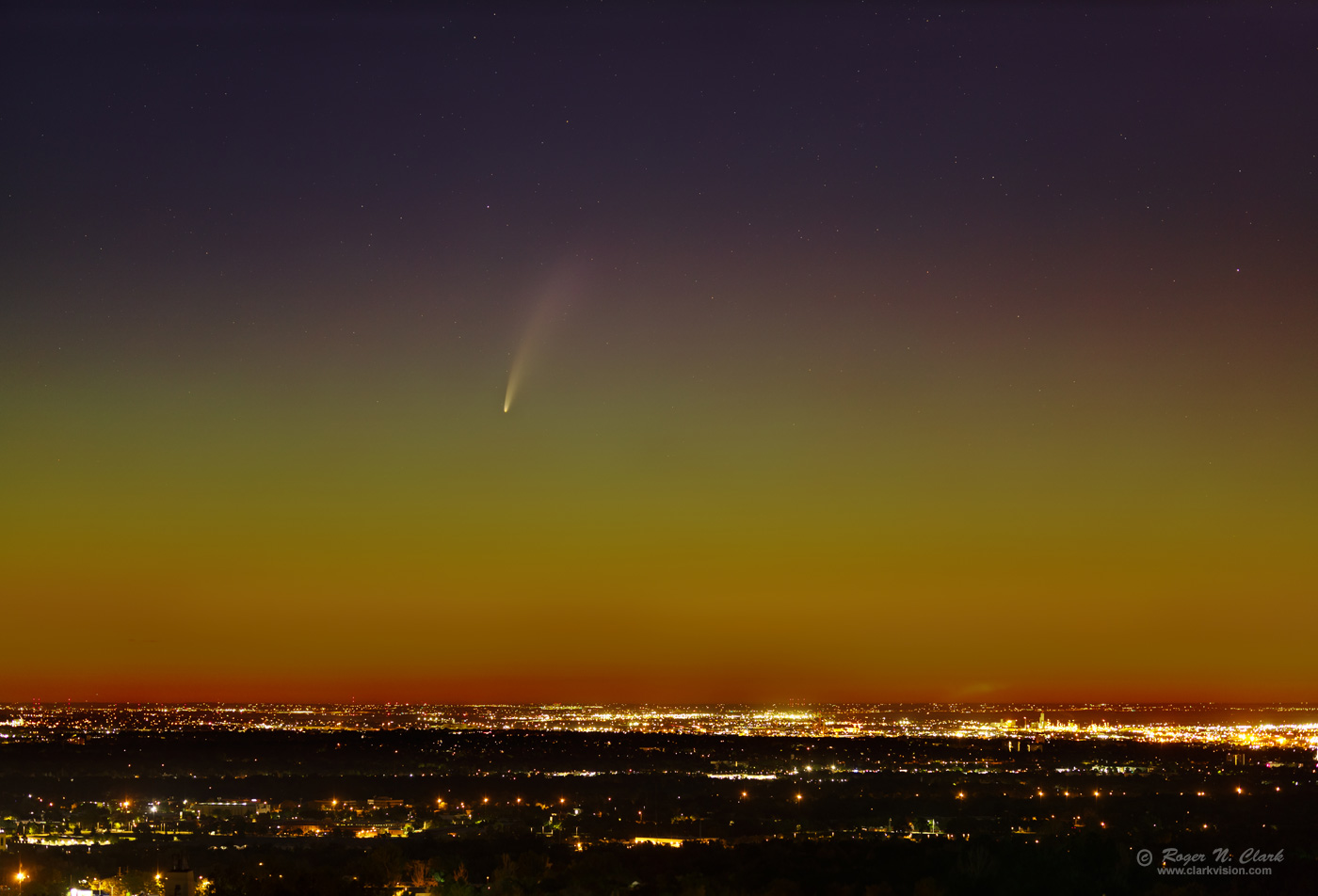| Home | Galleries | Articles | Reviews | Best Gear | New | About | Contact | Gallery Index | Previous |
Next |

| Home | Galleries | Articles | Reviews | Best Gear | New | About | Contact | Gallery Index | Previous |
Next |

Comet NEOWISE rising over the city of Denver in morning twilight on July 6, 2020. Before morning twilight became strong, green airglow was seen and is prominent in this image. Above the green layer is some faint red airglow. Comet NEOWISE displayed a tail about 2.7 degrees long. Near the horizon is the red from the oncoming sunrise. In the foreground is the city of Denver, Colorado. The tall buildings around the center of the city are near the right edge. The dominant color of the city lights is white from the many LED lights installed in the last few years, a marked change from the orange of a few years ago. The comet has just barely seen with the unaided eye, but beautiful in 6x30 binoculars and in the camera viewfinder with the 105 mm f/1.4 lens. Also striking was the white color of the comet--very different from the usual green from emission and yellow from dust. In darker skies away from the city, the comet is easily seen with unaided eyes.
Technical. This image was made from a 35-frame image stack on the sky, 10 image stack on the land, obtained with a Canon EOS 6D Mark II DSLR Camera and Sigma 105mm f/1.4 DG HSM Art Lens at f/1.4 and IS 200. Exposures were 0.8 second on the sky, 0.4 second on the land, all from a fixed tripod (no tracking on the sky). Total exposure time: 28 seconds on the sky, 4 seconds on land.
This is a natural color image.
The Exposure Factors, CEF, CEFA are measures of the relative amounts of light received from a subject. It can be used to fairly compare wildly different lens/telescope apertures and exposure times. For this image:
Modern DSLRs like the 6D Mark II include on sensor dark current suppression and low fixed pattern noise at ISOs around 1600 and higher, making no need for dark frame subtraction. Modern raw converters correct for light fall-off and also correct for hot/dead/stuck pixels. This makes processing low light images easy: simply align and average.
To learn how to obtain stunning images like this, please visit my Extensive Articles on Photography .
Keywords to this image = astrophoto-1 nightscapes airglow landscape-1 night low-light digital_astro colorado comet airglow canon_6D2
Image ID: comet-neowise-rnclark-105mm-c07.06.2020.img_3654-88-avg35.f-1400s.jpg
| Home | Galleries | Articles | Reviews | Best Gear | Science | New | About | Contact |
Last updated November 08, 2025